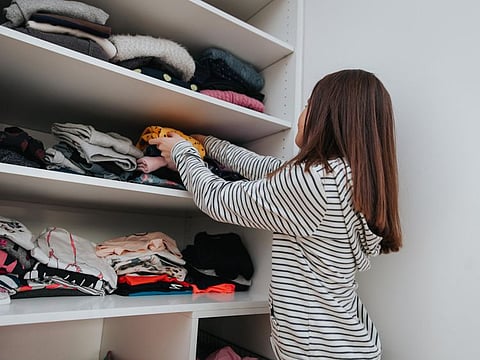Off the cuff: I need my grandma, not Mary Kondo
A show that tells you how to declutter and reorganise doesn’t make sense!

At the outset I would like to confess that I am a huge fan of Mary Kondo. The first time I saw her on screen I almost mistook her for a doll. The popular Netflix superstar is an organising consultant with a dainty face and mannerisms that qualify as angelic. When I began watching the show, Sid, my now teenage son walked in and said, “A show that tells you how to declutter, sort and re-organise your home?” He paused a bit, “This doesn’t make sense”, he said rolling his eyes.
Much as I would hate to admit, I have to agree with Sid. In fact, even my grandmother would have said the same thing.
Growing up in a small village in southern India, we were unaffected by western consumerism. Our life was simple and we had very few things. Clothes were bought once a year. Nobody had to fight a tsunami to find a T-shirt because, hey, nobody knew what a T-shirt was.
Each of us owned roughly 10 sets of clothes. Two sets were kept well ironed and neat so that we could wear them on an occasion. The others were used daily. Naturally, we would never have had to learn to fold clothes the “Mary Kondo” way, because, we would always, I mean, ALWAYS find what we wanted.
Nobody in my village bought clothes for a newborn. In fact, buying new clothes was considered inauspicious. It was always something old or what we now call — preloved clothes.
It was not just the newborns. Clothes had to be handed down to siblings, cousins and neighbours (and exactly in that order) till the last shred of cloth gave way. Some of the skirts I wore were worn by at least two of my cousins and I was expected to find the next eligible owner.
Most men wore vests that had very good aeration, toes peeped out of the socks, darning up torn edges of a blouse were normal. But even then, most clothes outlived their lives because they always found some roles to fill in. They were used as kitchen towels, mops, doormats.
For the longest time I was not aware that doormats had to be bought because grandma had told me that only crazy rich people bought such things because there was a need to show off. Poor grandma was never hit by consumerism.
Onslaught of consumerism
When I had to move in with my husband after my marriage, I packed a handmade doormat in my suitcase that was made from a kitchen towel. I was thrilled to emulate grandma. Sadly, it didn’t last!
Mending clothes and finding uses, I soon discovered took effort. It was easier to throw away a sock with a hole in it than to find some use for it. I teased grandma and I told her it was foolish to turn a torn bedsheet into a baby quilt when we could easily buy one with pretty colours.
Grandma is now long gone. I wonder what she would think of me. While she was a minimalist, I certainly am not.
Over time, shopping has become my recreation. I buy things only because there is a sale. Electronics, shoes, clothes, kitchen supplies have walked into my life and my house is teeming with things I don’t know even exist.
In her show, Mary Kondo talks about keeping those things that “spark joy”. In grandma’s household, everything around the house sparked joy because she always found some use for every little thing — even a torn sock.
Perhaps, Sid is right. I may not be able to sew that quilt or make a foot rug out of used clothes. But I think I should navigate my life out of this mayhem of consumerism. Perhaps I don’t need Mary Kondo. Perhaps who I need is my grandmother.
Sudha Subramanian is an author and freelance writer based in Dubai. Twitter: @sudhasubraman
Sign up for the Daily Briefing
Get the latest news and updates straight to your inbox



